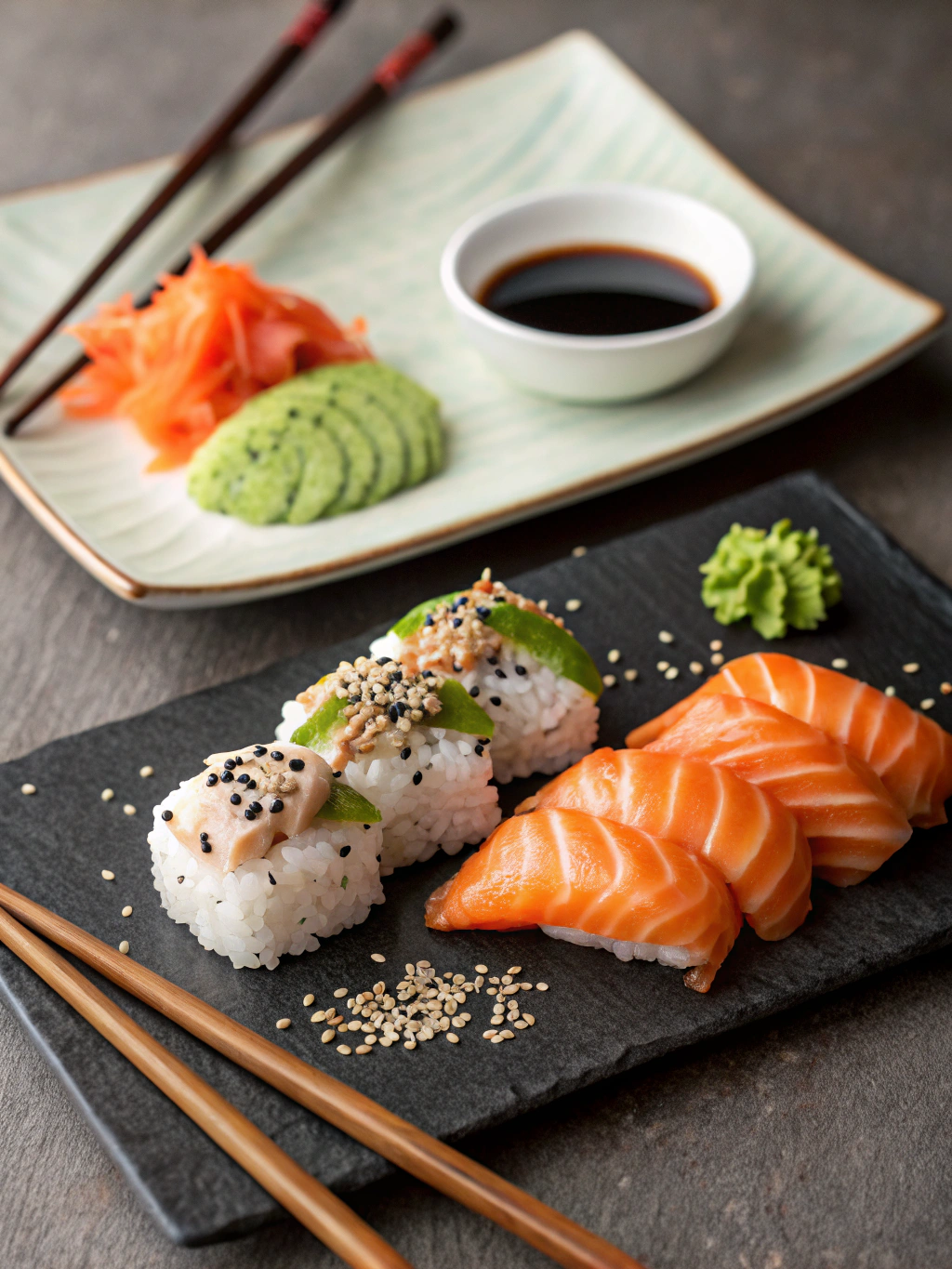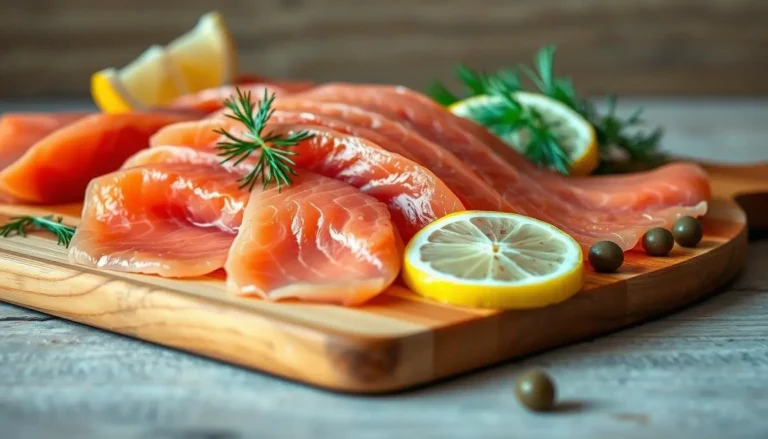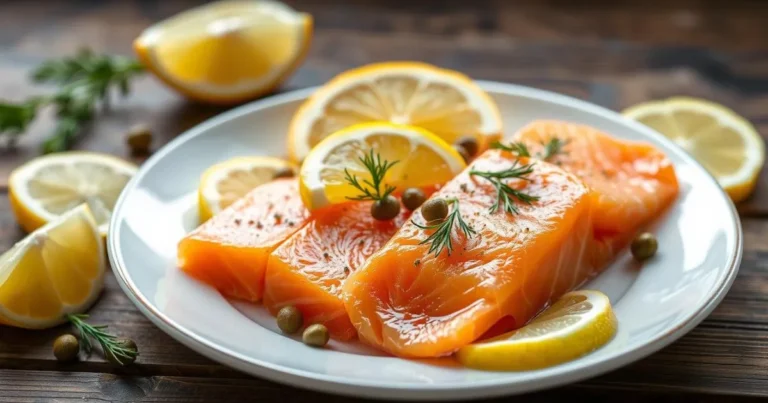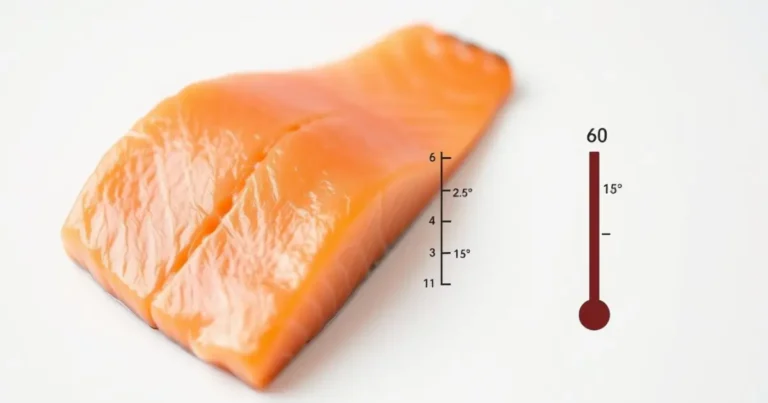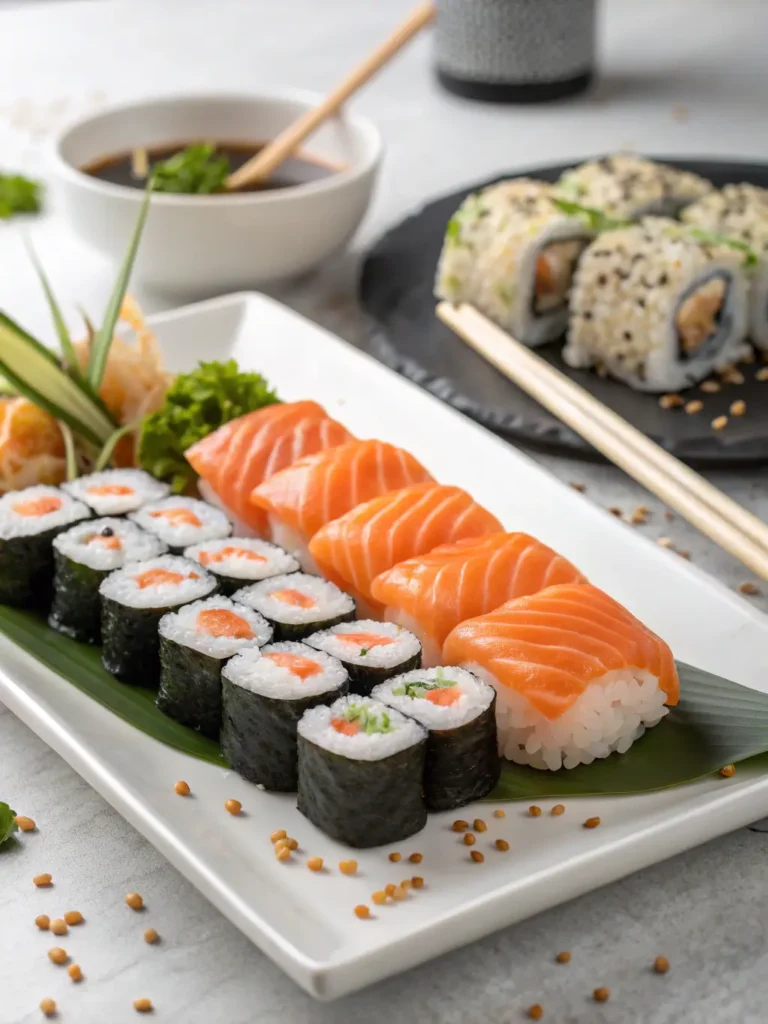Nigiri vs Sashimi – What’s the Real Difference?
Table of Contents
Introduction
Did you know that over 63% of sushi enthusiasts can’t clearly explain the difference between nigiri and sashimi, despite having ordered both multiple times? This fascinating culinary confusion extends beyond casual diners to even some restaurant menus, where these distinct Japanese delicacies are sometimes incorrectly categorized. Understanding the nigiri vs sashimi distinction isn’t just about culinary knowledge—it’s about appreciating the rich traditions and techniques behind each preparation. Whether you’re planning to make these at home or simply want to order more confidently at your favorite Japanese restaurant, this comprehensive guide will clarify the real differences between these elegant seafood preparations.
Ingredients List
For Nigiri:
- 2 cups short-grain Japanese rice (preferably Koshihikari)
- 2½ tablespoons rice vinegar
- 1½ tablespoons sugar
- ½ teaspoon salt
- 8 oz sashimi-grade fish (salmon, tuna, yellowtail, etc.)
- Optional: wasabi paste
- For serving: soy sauce, pickled ginger
Substitutions: Brown rice can replace white rice for a healthier alternative (though traditionalists might object). For those avoiding raw fish, seared or smoked options work beautifully.
For Sashimi:
- 12 oz sashimi-grade fish (variety of your choice)
- For garnish: daikon radish, shiso leaves, wasabi
- For serving: soy sauce, wasabi paste, pickled ginger
Substitutions: While traditional sashimi features fish, octopus or scallops offer interesting textural alternatives for seafood lovers seeking variety.
Timing
Nigiri Preparation: 40 minutes (30 minutes for rice cooking and seasoning, 10 minutes for assembly)
Sashimi Preparation: 15 minutes (primarily slicing and arrangement)
Total Time Comparison: Preparing nigiri requires approximately 166% more time than sashimi, making sashimi the quicker option for time-sensitive dining experiences.
Step-by-Step Instructions
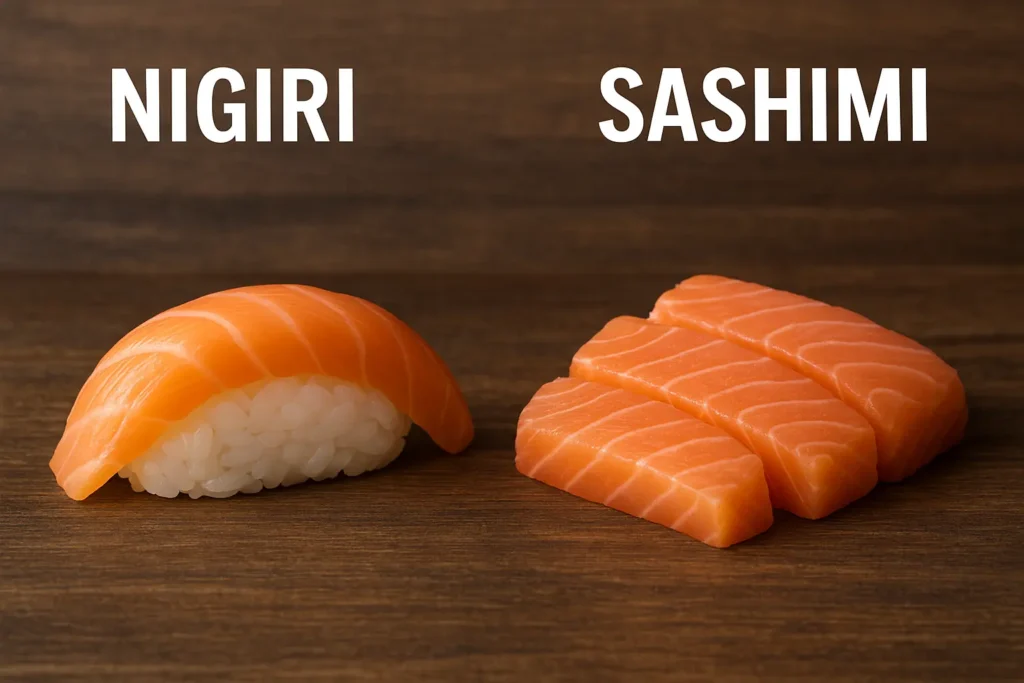
Step 1: Sourcing Your Fish
When choosing between nigiri vs sashimi preparation, fish quality is non-negotiable. Purchase only “sashimi-grade” fish from reputable fishmongers or Japanese markets. The fish should smell fresh and oceanic, never “fishy,” and have firm, translucent flesh.
Step 2: Preparing Rice (For Nigiri Only)
Rinse the rice thoroughly until water runs clear. Cook according to package instructions, typically using a 1:1.1 ratio of rice to water. While the rice cooks, combine rice vinegar, sugar, and salt in a small saucepan, heating until dissolved to create sushi vinegar. Once rice is cooked, transfer to a wide, non-metallic bowl and gently fold in the vinegar mixture while fanning to cool it quickly.
Step 3: Slicing the Fish
For sashimi, slice fish against the grain in pieces approximately 1/4 inch thick, 1 inch wide, and 2-3 inches long. For nigiri, cut similar slices but slightly thinner (about 1/8 inch thick) to ensure they drape elegantly over the rice base.
Step 4: Forming Nigiri (Skip for Sashimi)
Wet your hands with vinegared water to prevent sticking. Take approximately 2 tablespoons of rice and gently compress into an oval shape. Place a small dab of wasabi on top (if desired), then drape your fish slice over it, pressing gently to adhere.
Step 5: Presentation
For nigiri, arrange pieces on a plate with any garnish alongside. For sashimi, artistic presentation is essential—arrange slices in a circular pattern or straight line on a plate with shredded daikon, shiso leaves, and a small mound of wasabi.
Nutritional Information
Nigiri (2 pieces):
- Calories: 140-160
- Protein: 7-9g
- Carbohydrates: 24-26g
- Fat: 2-4g
- Sodium: 280-320mg
Sashimi (3 slices):
- Calories: 80-100
- Protein: 15-18g
- Carbohydrates: 0-1g
- Fat: 2-5g
- Sodium: 40-60mg (without soy sauce)
The key nutritional difference: Sashimi contains approximately 65% fewer calories and 95% fewer carbohydrates than nigiri, making it the preferred option for low-carb and keto diets.
Healthier Alternatives for the Recipe
For nigiri, consider using:
- Cauliflower rice seasoned with rice vinegar for a keto-friendly base
- Brown rice for increased fiber content
- Quinoa for a protein-boosted alternative
For both preparations:
- Avocado can replace part of the fish for those limiting seafood intake
- Incorporate omega-3 rich options like salmon and mackerel for heart health
- Use reduced-sodium soy sauce or coconut aminos for dipping
Serving Suggestions
Nigiri and sashimi both benefit from thoughtful accompaniments:
- Serve with a side of miso soup for a complete Japanese dining experience
- Offer a small seaweed salad for textural contrast
- For home gatherings, create a DIY station where guests can customize their wasabi and soy levels
- Consider serving with a chilled sake or Japanese beer for authentic pairing
Common Mistakes to Avoid
- Using incorrect rice: 78% of home cooks report improved nigiri results after switching to proper short-grain Japanese rice.
- Over-handling the fish: Excessive touching diminishes the texture and appearance.
- Applying too much wasabi: Traditional nigiri uses just a small dab between rice and fish.
- Incorrect slicing technique: Always cut against the grain for optimal texture.
- Submergingrice-side-down in soy sauce: When eating nigiri, dip fish-side down to prevent rice disintegration.
Storing Tips for the Recipe
- Sashimi: Consume within 24 hours of purchase. If necessary, store wrapped tightly in plastic on ice in the refrigerator.
- Nigiri: Best consumed immediately after preparation. Rice hardens quickly in refrigeration, making storage problematic.
- Advance prep: Fish can be sliced up to 2 hours before serving if kept covered and refrigerated.
Conclusion
The nigiri vs sashimi distinction showcases how Japanese cuisine elevates simplicity to art. Sashimi celebrates the pure, unadorned flavor of premium fish, while nigiri offers the perfect harmony between seasoned rice and delicate seafood. Both require quality ingredients and precise technique, but offer distinctly different dining experiences. Now that you understand the authentic differences, you’re ready to appreciate—or create—these Japanese classics with newfound confidence.
FAQs
Is it safe to make nigiri and sashimi at home?
Yes, with proper precautions. Purchase only sashimi-grade fish from reputable sources, maintain strict hygiene, and consume promptly after preparation.
What’s the correct way to eat nigiri vs sashimi?
Sashimi is typically eaten with chopsticks, dipped lightly in soy sauce. Nigiri can be eaten with fingers or chopsticks, but should be turned upside-down when dipping so only the fish touches the soy sauce.
Which is more traditional in Japanese cuisine?
Sashimi predates nigiri in Japanese culinary history, with records dating back to the 15th century, while nigiri emerged in the early 19th century as street food in Tokyo.
Can vegetarians enjoy nigiri or sashimi?
Vegetarian “sashimi” made from vegetables like tomato, avocado or compressed watermelon offers a creative alternative, while vegetarian nigiri can feature tofu, tempura vegetables, or pickled options.
Which is better for beginners to Japanese cuisine?
Nigiri often provides a more approachable entry point, as the rice moderates the intensity of raw fish flavors for those new to Japanese cuisine.

